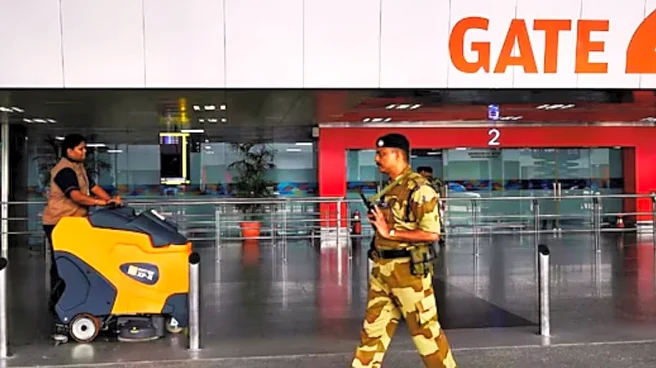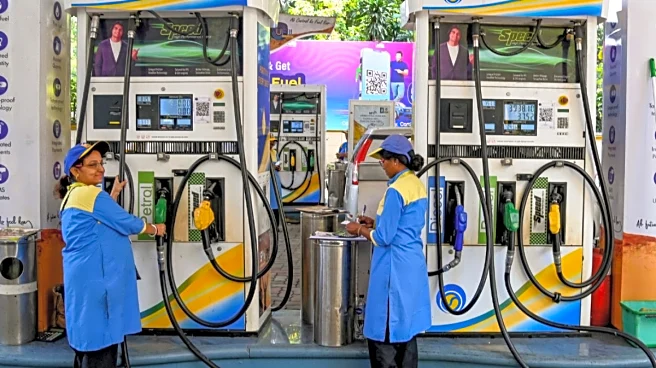“God saved us today. If the plane had taken off without sufficient thrust, it could have been a disaster,” said a passenger onboard IndiGo flight 6E-2111 from Lucknow to Delhi, which was forced to abort take-off just minutes before the scheduled departure on Saturday.
According to airport officials, the incident occurred at around 11.10am when the pilot, detecting an anomaly related to engine thrust, executed an “aborted take-off”—an emergency procedure that halts a plane’s acceleration to avert possible danger.
The flight was carrying 151 passengers, including Mainpuri MP and wife of Samajwadi Party chief Akhilesh Yadav, Dimple Yadav. “The aircraft had already begun its take-off roll when the pilot detected insufficient engine thrust, a critical
requirement for lift-off. Following protocol, the pilot immediately initiated full braking and informed the Air Traffic Control (ATC), bringing the aircraft safely back to Bay No. 07 via the taxiway,” an airport official told News18 on the condition of anonymity.
Several passengers reported feeling a jolt when the aircraft abruptly decelerated. “The plane had gained considerable speed when we suddenly heard a strange noise and felt the brakes being applied. For a moment, we thought something had hit the plane. It was only after the aircraft slowed down and taxied back that we realised it was a technical issue,” said a passenger.
According to aviation experts, an aborted take-off is one of the most critical decisions a pilot can make, especially when the aircraft has already gathered speed.
“A modern commercial jet has a point called ‘V1 speed’. Before this speed is reached, the pilot can decide to stop the aircraft on the runway. After V1, take-off must be continued even if an engine fails. In this case, the decision was taken in time, which is why all passengers were safe,” said a former Airbus A320 commander.
In an official statement, IndiGo confirmed the incident, saying: “The safety of our passengers is our highest priority. The aircraft was stopped as a precaution after a potential issue was detected during the take-off roll. All passengers were safely deplaned and accommodated on another flight to Delhi.”
The Directorate General of Civil Aviation (DGCA), India’s aviation regulator, has taken note of the matter and sought a detailed report from the airline. A senior DGCA official said, “Preliminary information suggests the aircraft did not receive the required thrust to take off. We will examine whether it was a technical glitch, a sensor fault, or an issue requiring corrective maintenance.”
What Is an Aborted Take-off?
An aborted take-off, known in aviation terminology as a “rejected take-off”, occurs when a pilot decides to discontinue take-off after starting the take-off roll. This may be due to multiple reasons, including engine failure, a sudden warning light in the cockpit, bird strikes, tire bursts, or even runway obstructions.
In this case, the warning was likely related to thrust—the force generated by the engines that propels the plane forward. If thrust is insufficient, the plane may not be able to achieve the required lift to take off safely. “This is one of the most critical safety parameters. A take-off with inadequate thrust could result in a runway overrun or even a stall after lift-off. The pilot’s timely decision avoided a potentially catastrophic situation,” said an aviation safety analyst.
Industry veterans point out that incidents like these highlight the robustness of airline safety procedures. “It is normal for passengers to feel anxious after such an event, but an aborted take-off is actually a sign that the system is working as intended. The pilot detected a potential threat, acted swiftly, and brought everyone back safely. This is precisely what we train for,” said a commercial airline pilot with over 12,000 flying hours.
Passengers were later accommodated on an alternate IndiGo flight and reached Delhi safely. Dimple Yadav, who was traveling to attend party meetings, reportedly spoke briefly with some passengers and thanked the crew for their professionalism.
Experts also emphasised that passengers must remain calm and follow crew instructions during such situations. “In the few seconds after an aborted take-off, the deceleration can feel dramatic but that is the safest thing to do. Keeping seat belts fastened and listening to crew announcements is crucial,” said a senior flight instructor.
The DGCA is expected to release its detailed report in the coming days, which will confirm whether the incident was due to a technical fault or a preventive action triggered by cockpit alerts. For now, passengers and crew alike are breathing a sigh of relief, grateful that a potentially dangerous situation ended without injuries.







/images/ppid_59c68470-image-175792254705859372.webp)



/images/ppid_59c68470-image-175792002794847580.webp)
